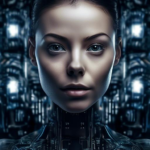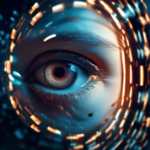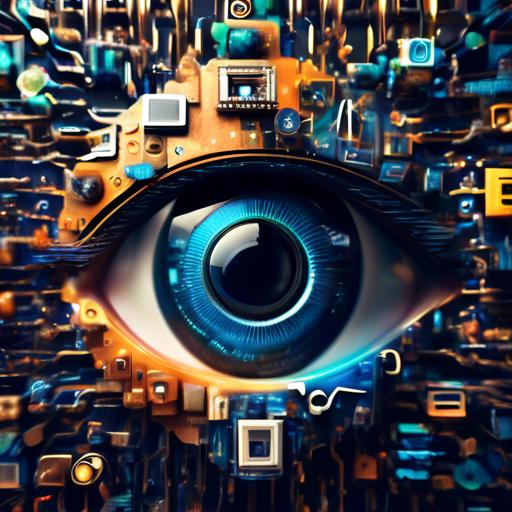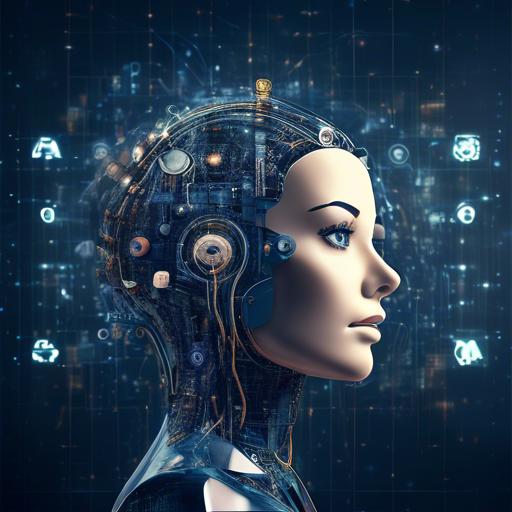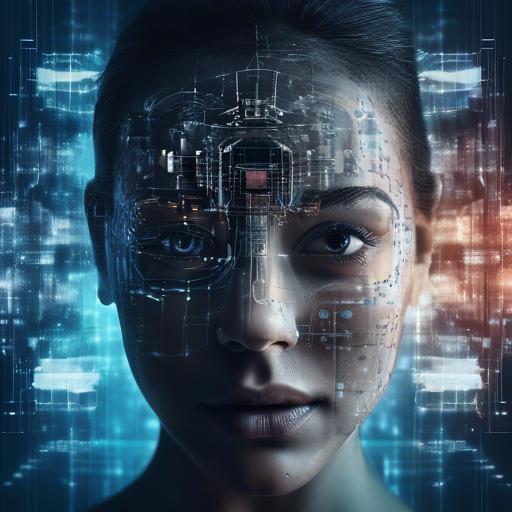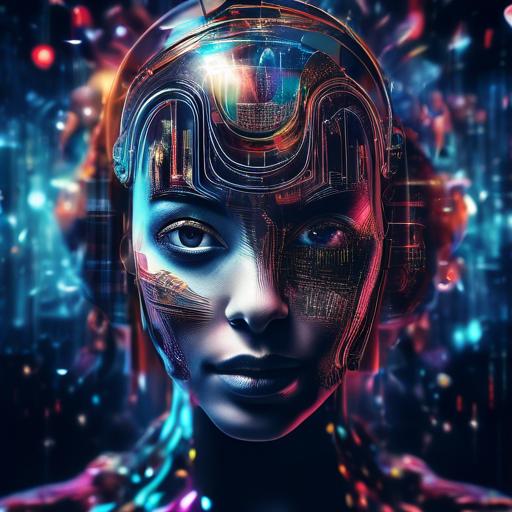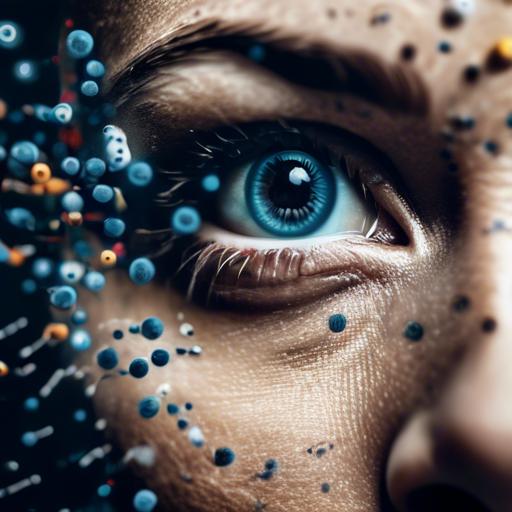In a world where imagination knows no bounds, animation stands as one of the most captivating forms of storytelling. Every frame breathes life into characters and worlds, whisking us away on adventures limited only by the scope of our creativity. Yet, behind the mesmerizing visual spectacles we adore, lies an intricate dance of skill, patience, and technology.
Imagine if you could wave a wand and bring your visions to life with a touch of magic. Well, this isn’t as far-fetched as it sounds. With the advent of artificial intelligence, the animation industry is experiencing a groundbreaking transformation. AI tools are now the unsung heroes, ready to assist animators in weaving their pixelated dreams into reality.
Welcome to the realm where creativity meets innovation. Whether you’re an experienced animator eager to explore new horizons, or a novice taking your first steps into this vibrant art form, this guide will illuminate the path for you. We’ll unravel the mysteries of how to harness AI tools for your animation projects, turning what once seemed like alchemy into an achievable process.
Get ready to embark on a journey that will redefine your animation workflow, amplify your creative prowess, and liberate you from the mundane. With AI by your side, the possibilities are as boundless as your imagination. Let’s dive in and discover how you can bring your animated stories to life with technology’s most exhilarating advancements.
Table of Contents
- Mastering the Basics of AI Animation Tools
- Choosing the Right AI Software for Your Project
- Designing Stunning Characters with AI Assistance
- Enhancing Backgrounds and Scenes Using AI
- Streamlining Animation Workflow with Automation
- Utilizing AI for Realistic Motion Capture
- Incorporating Voice and Sound Effects via AI
- Optimizing Render Times with AI-Driven Techniques
- Collaborating with AI: Tips for Seamless Integration
- The Conclusion
Mastering the Basics of AI Animation Tools
Unlocking the potential of AI-driven animation tools begins with a thorough understanding of their basic functionalities. Whether you’re a novice in the world of animation or looking to integrate AI to streamline your workflow, getting familiar with these basics can significantly enhance your creative process.
AI tools for animation often come packed with features that automate and optimize various aspects of animation creation. **Motion capture**, **keyframe generation**, and **character rigging** are some of the core components transformed by AI. Let’s delve deeper into how you can leverage these tools effectively:
- Motion Capture: AI algorithms can now analyze real-life movements and replicate them onto your digital characters with stunning accuracy.
- Keyframe Generation: Automate the tedious process of creating keyframes, allowing the AI to generate smooth transitions and movements between crucial frames.
- Character Rigging: Swiftly set up skeletal frameworks that define your character’s movements, making the animation process faster and more intuitive.
One of the most exhilarating features of AI animation tools is their ability to learn and adapt. These tools become smarter over time, offering **suggestions for improvements** and **optimizing workflows** based on previous projects. This means the more you use them, the more efficient and creative you can become.
| AI Tool | Functionality | Advantage |
|---|---|---|
| DeepMotion | Motion Capture | Realistic Character Movements |
| Runway ML | Keyframe Generation | Seamless Transitions |
| Mixamo | Character Rigging | Streamlined Rigging Process |
don’t hesitate to **experiment and explore** the boundaries of what these tools can achieve. Many AI animation platforms offer extensive tutorials and communities where you can exchange ideas and seek advice. Engaging with these resources can provide you with invaluable insights and tips, ensuring that you harness the full power of artificial intelligence in your animation projects.
Choosing the Right AI Software for Your Project
When it comes to selecting **AI software for your animation project**, the first step is to identify your specific needs. Are you animating characters, designing detailed backgrounds, or creating special effects? Different AI tools specialize in different aspects of animation, so understanding your project’s requirements will guide your choice. Some popular options include Adobe Character Animator, Autodesk Maya, and Blender with AI plugins.
- Character Animation: Adobe Character Animator uses facial recognition to animate characters in real time, making it perfect for projects requiring expressive, lifelike characters.
- 3D Modeling & Animation: Autodesk Maya is a robust tool widely used in the industry for creating everything from characters to detailed environmental assets.
- Open Source Option: Blender, enhanced with AI plugins like DeepMotion, offers a cost-effective and versatile solution for a wide array of animation needs.
Beyond the technical capabilities, consider the **learning curve and community support**. Some tools, like Blender, boast extensive online communities and resources, including tutorials and forums. This makes it easier for newcomers to learn and troubleshoot, accelerating the development timeline. On the other hand, highly specialized software might have steeper learning curves but offer unparalleled precision for niche applications.
| Software | Best For | Price | Community Support |
|---|---|---|---|
| Adobe Character Animator | Real-time Character Animation | Subscription | High |
| Autodesk Maya | 3D Modeling & Animation | Subscription | Medium |
| Blender | Versatile Animation | Free | Very High |
**integration and compatibility** are crucial when choosing your AI tool. Ensure that your chosen software integrates smoothly with the other tools in your workflow. For instance, if you’re using Unreal Engine for game development, you’ll want a tool with strong compatibility. Adobe products, known for their seamless integration across the Creative Cloud, can save time and effort, ensuring a more efficient production pipeline.
- Adobe Suite Compatibility: Great for projects using various Adobe tools.
- Maya & Unreal Engine: Ideal for game development projects.
- Blender Flexibility: Excellent for diverse artistic projects due to broad plugin support.
Designing Stunning Characters with AI Assistance
Creating memorable characters is at the heart of any successful animation project. With the advent of AI tools, this task has become increasingly innovative, offering animators an expansive suite of features to turn their visions into reality. These tools streamline the character design process, making it more efficient and intuitive, allowing you to focus on the creative aspects.
One of the standout capabilities of AI in character design is the ability to generate detailed and expressive faces. **AI algorithms can analyze and generate facial features** that can range from photo-realistic to stylistically exaggerated. This helps in creating characters that are both visually appealing and emotionally engaging. Imagine having an AI that suggests optimal facial expressions based on the character’s role in your narrative—this is now possible.
Beyond faces, AI can assist in designing entire bodies, including dynamic and diverse postures. Tools like **PoseNet** allow you to draft complicated poses with ease. You can take a snapshot of a real-life model, and the AI can replicate it for your character, ensuring that the posture looks natural and fluid. This is particularly useful for action sequences or any scenes requiring complex body movements.
AI tools also simplify the coloring and texturing process. **StyleGAN** and similar technologies can match your character design with the perfect color palette and textures, based on the style you’re aiming for. Imagine creating gradients, shadow effects, or even specific skin textures at a click of a button, allowing you to experiment without the usual time constraints.
Below is a comparison table of popular AI tools for character design:
| Tool | Feature Highlight | Best For |
|---|---|---|
| **Artbreeder** | Facial feature generation | Realistic characters |
| **PoseNet** | Dynamic posture creation | Action scenes |
| **StyleGAN** | Palette and texture matching | Textured characters |
These tools work seamlessly with **traditional animation software** like Blender or Autodesk Maya, offering plugins and integrations that facilitate importing and exporting your AI-enhanced designs. This means you can effortlessly move from conceptualization to animation, creating a smoother workflow and more consistent results.
Enhancing Backgrounds and Scenes Using AI
Leveraging AI tools to enhance backgrounds and scenes in your animation projects can elevate the overall quality and visual appeal of your work with minimal effort. The latest AI-driven software offers a plethora of features that bring your creative vision to life with stunning and realistic settings.
AI tools can dynamically generate **landscapes, urban environments, and even fantasy worlds**. These tools use deep learning algorithms to analyze various design elements and automatically adjust colors, lights, and textures. For instance, software like NVIDIA GauGAN and Artbreeder can take simple sketches and transform them into richly detailed backgrounds. Additionally, platforms like Deep Dream Generator enable you to apply sophisticated styles and effects that fit your desired aesthetic.
Here are some advantages of using AI for background enhancement:
- **Time-saving**: AI can rapidly generate high-quality scenes, decreasing the time spent on manual background design.
- **Consistency**: Maintain uniformity across various scenes with AI-driven color and lighting corrections.
- **Creativity**: Expand your creative horizons with unique, AI-generated backgrounds that inspire new ideas.
- **Cost-effective**: Reduce the need for extensive human resources and expensive software for background creation.
To effectively utilize AI tools, it’s crucial to integrate them seamlessly into your workflow. Here’s a simple and effective workflow:
| Step | Action | Tool |
|---|---|---|
| 1 | Create Initial Sketch | Adobe Photoshop or Procreate |
| 2 | Generate Background | NVIDIA GauGAN |
| 3 | Fine-Tune Details | Artbreeder |
| 4 | Style and Effects | Deep Dream Generator |
Remember to always iterate and refine your designs. AI tools are powerful but not yet perfect. Utilize feedback loops where you review the generated backgrounds and make manual adjustments as needed to match your vision. Embrace the power of AI as a collaborator, augmenting your creative skills to craft captivating scenes that resonate with your audience.
Streamlining Animation Workflow with Automation
Automation in animation is like adding magic to your wand. By leveraging AI tools, animators can cut down on repetitive tasks and focus more on the creative aspects of their projects. Here are some ways you can streamline your animation workflow using automation:
- Automated Inbetweens: AI can generate smooth transitions between keyframes, saving hours of tedious work. Advanced tools can even learn your style, making the inbetweens match your unique artistic flair.
- Smart Cleanup: Say goodbye to the painstaking process of cleaning up sketches. Automated cleanup tools can refine your rough drawings with artificial precision, enabling faster turnaround times.
- Voice Synchronization: Matching mouth movements to voiceovers is notoriously time-consuming. AI can automatically sync dialogue with character animations, ensuring perfect lip-sync every time.
Moreover, AI tools are not just limited to enhancing the drawing process. They also significantly improve workflow management:
| Task | Traditional Method | AI Method |
|---|---|---|
| Keyframe Animation | Manual drawing of each frame | AI-generated inbetweens |
| Lip-sync | Frame-by-frame adjustment | Automated synchronization |
| Cleanup | Manual refinement | AI-assisted cleanup |
By integrating these AI-powered tools into your workflow, you can reduce the mundane and repetitive tasks, allowing you to pour your energy into more innovative and creative endeavors. Our animations can become more polished and compelling, and we can hit deadlines without breaking a sweat. Imagine a world where your wildest ideas come to life effortlessly, all thanks to a smart, automated assistant working tirelessly in the background. Embrace automation and watch as your animation projects reach new heights.
Utilizing AI for Realistic Motion Capture
AI has revolutionized the way animators capture and replicate human motion. **Gone are the days** when you needed a room full of sensors and expensive suits. With advanced AI algorithms, capturing realistic movement has become simpler, more efficient, and incredibly precise. These tools, powered by deep learning, can analyze and replicate a wide range of motions, from the subtlest facial expressions to complex full-body movements. This means characters in your animation can now exhibit movements that closely mimic real human behavior.
Here are some of the **benefits** of using AI for motion capture:
- **Cost-Effectiveness**: Reduced need for expensive hardware and studio space.
- **Efficiency**: Faster capture and processing times.
- **Precision**: High accuracy in motion replication, even for intricate movements.
- **Flexibility**: Ability to capture movements in diverse environments, not confined to controlled studio settings.
Utilizing AI-driven motion capture tools simplifies the animation process. Here’s a brief comparison of traditional motion capture versus AI-based solutions:
| Feature | Traditional Motion Capture | AI-Based Motion Capture |
|---|---|---|
| Setup Time | Lengthy and complex | Quick and straightforward |
| Cost | High | Low to moderate |
| Movement Accuracy | Variable | High |
| Flexibility | Low | High |
**Integrating AI technologies** into your animation projects can significantly enhance the workflow. Not only does it streamline the motion capture process, but it also offers more creative control, allowing animators to focus on refining and perfecting the artistic aspects of their work. Furthermore, AI can adapt to different animation styles, which can help bring unique concepts to life that might be more challenging with traditional methods.
In the current state of **digital advancements**, embracing AI tools for motion capture has become crucial. Whether you’re an indie developer or part of a large studio, these technologies democratize access to high-quality animation, fostering innovation and creativity across the industry.
Incorporating Voice and Sound Effects via AI
Breathing life into animated characters can be exponentially enhanced with the integration of voice and sound effects using AI. Imagining a world where your main character has a perfectly timed laugh or a realistic sounding footstep is now a reality, thanks to artificial intelligence. This revolutionizes the way animators approach adding depth and texture to their projects, allowing for a more immersive and engaging viewer experience.
- Text-to-Speech (TTS) Engines: Modern TTS engines powered by AI can produce highly realistic and emotive voiceovers. By simply typing out the desired dialogue, you can generate audio clips in various voices, pitch, and even accents.
- Voice Cloning: Tools like Descript or Play.ht allow you to clone voices, creating custom character narrations that sound exactly how you envision them.
- Sound Libraries Enhanced by AI: Platforms like Soundraw use AI to compose music and sound effects that perfectly match your animated scenes, from intense action sequences to serene natural landscapes.
For a truly interactive approach, some animators blend human emotion databases with AI models to create soundscapes that respond in real-time to character movements and expressions. This level of integration ensures that every sigh, laugh, and gasp is precisely tuned to the context, increasing the feeling of authenticity.
Below is a quick comparison of popular AI tools that are transforming the use of voice and sound in animation:
| Tool | Primary Feature | Best For |
|---|---|---|
| Descript | Voice Cloning | Realistic voiceovers |
| Play.ht | Text-to-Speech | Multilingual projects |
| Soundraw | Sound Effect Generation | Dynamic music scoring |
These AI-powered tools are not just limited to professional studios. Even independent creators can leverage these technologies to produce high-quality sound designs. With user-friendly interfaces and customizable options, the sky’s the limit when it comes to enriching your animation projects with voice and sound effects.
Optimizing Render Times with AI-Driven Techniques
Speeding up render times is a game changer in animation projects, and AI-driven tools offer groundbreaking solutions. Traditionally, rendering is a time-consuming process, often requiring hours, sometimes days, to produce high-quality results. With AI, this dynamic shifts dramatically, allowing animators to deliver projects faster without compromising on quality.
AI algorithms are designed to optimize render paths and predict segments that require the most processing power, effectively reducing unnecessary computations. By leveraging tools like Intel’s Open Image Denoise or NVIDIA’s OptiX, you can achieve photorealistic output in a fraction of the time originally needed. Furthermore, AI can adapt to varied animation styles, learning and improving with each render cycle.
Consider using AI-enhanced plugins specifically tailored for popular rendering engines. These plugins integrate seamlessly, requiring minimal adjustments to your current workflow. Here are some excellent tools to explore:
- **DeepArt** - Enhances visual details while speeding up the rendering process.
- **AI-Render** – Optimizes frame rendering, ensuring efficient use of computational resources.
- **RenderMan AI** - Uses machine learning to predict and expedite complex render tasks.
For a more technical overview, here’s a comparative table of popular AI tools:
| Tool | Algorithm | Supported Engines |
|---|---|---|
| DeepArt | Deep Learning | Blender, Maya |
| AI-Render | Neural Networks | 3ds Max, Cinema 4D |
| RenderMan AI | ML Predictive | RenderMan, Houdini |
Integrating AI-driven techniques not only accelerates render times but also opens up new creative possibilities. Imagine being able to iterate on your animations more frequently, refining details that were previously deemed too time-intensive. AI assists you in focusing on the artistic aspects of your project while it handles the grunt work, elevating your overall productivity and creative output.
Collaborating with AI: Tips for Seamless Integration
Integrating AI tools into your animation workflow can be a game-changer, but it’s essential to ensure that the collaboration between human creativity and artificial intelligence is smooth. Here are a few tips to help you seamlessly integrate AI into your animation projects:
Understand AI Capabilities and Limitations
First and foremost, it’s paramount to understand what your AI tools can and cannot do. While AI can greatly speed up repetitive tasks, improve facial recognition, and enhance motion capture, remember that the creative spark must come from you. **Artificial intelligence excels at pattern recognition and optimization**, but it still requires your artistic direction to bring animations to life.
Leverage AI for Repetitive Tasks
One of the greatest strengths of AI is its ability to handle monotonous tasks efficiently, saving you hours of work. Consider using AI for tasks like:
- **Automated inbetweening** – AI can generate smooth transitions between keyframes.
- **Clean-up animation** – AI tools can refine and polish your linework more quickly than a human hand.
- **Facial motion capture** – Use AI to map facial expressions accurately from video references.
Enhance Collaboration
As new AI tools emerge, ensuring they integrate well with existing software and teams is crucial. Choose AI solutions that offer easy compatibility with industry-standard software like Adobe After Effects and Autodesk Maya. Additionally, consider the following to foster effective teamwork:
- **Cross-software compatibility** – Ensure your AI tools can import/export from the software you already use.
- **Collaborative features** – Opt for tools that allow multiple team members to collaborate in real-time.
- **Training and support** – Invest in training for your team to get up to speed with new AI technologies.
Measure Your Success
To continually improve, track the impact of AI on your projects. Regularly review the effectiveness of your AI tools by considering key metrics such as:
| Metric | Importance |
|---|---|
| **Time Saved** | Quantify the labor hours reduced by AI automation. |
| **Quality Improvement** | Assess enhancements in animation smoothness and detail. |
| **Team Satisfaction** | Gather feedback on team experiences with AI tools. |
The Conclusion
As you dive into the world of AI tools for animation projects, remember that the possibilities are endless. From creating unique characters to enhancing your storytelling, these tools are here to support and inspire your creativity. Embrace the technological advancements at your disposal and watch your animation projects come to life like never before. With a bit of practice and experimentation, you’ll soon be wowing audiences with your innovative creations. So go forth and animate with confidence, knowing that the power of AI is at your fingertips. Here’s to bringing your wildest animation dreams to fruition!




